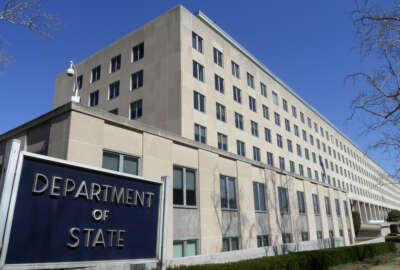For USDA, advancing DEIA means making long-term, internal changes
After considering feedback from employees, stakeholders and others, USDA released its final strategic plan to advance diversity, equity, inclusion and...
As agencies work through requirements from the White House to address barriers to diversity, equity, inclusion and accessibility in the federal workforce, the Agriculture Department is one agency making some internal progress.
USDA’s DEIA strategic plan for fiscal 2022-2026, which it released on Sept. 23, laid some groundwork for developing policies and delivering services with DEIA top of mind, but before the agency could start implementing the plan, it first needed to consider the challenges and barriers that already existed.
Robust DEIA at the agency “hasn’t always been the case,” USDA Secretary Tom Vilsack said at a Sept. 23 meeting.
“We’re playing a bit of catchup when it comes to things like compensation and pay equity, looking for creative and innovative ways in terms of our hiring,” he said. “But with this new strategic plan, we believe we will be in a better position to assist our employees and the people we serve.”
And the work to improve DEIA didn’t start with the strategic plan. Leading up to the plan’s release, the agency had already started taking steps toward equity advancement, like using resources from the American Rescue Plan to better connect with underserved communities, and appointing Chief Diversity Officer Leslie Weldon.
Appointing a CDO and developing a strategic plan are just a few of the requirements for agencies under President Joe Biden’s executive order on diversity, equity, inclusion and accessibility in the federal workforce. The order also called on agencies to identify and address barriers, for example, in their recruitment, training, hiring and development processes.
“We also had a series of equity action plans that have been instituted at each mission area. That has contained over 500 recommendations in terms of how we can do a better job of installing and creating a sense of equity in everything we do at USDA,” Vilsack said.
Creating an equity commission was another part of USDA’s plan. The commission contributes to DEIA efforts by evaluating agency programs and services, and recommending how to reduce barriers to those trying to access them.
Along with the externally-facing equity commission, the agency also created an executive leadership forum to work on internal efforts toward inclusion. USDA leaders hosted town halls and focus groups, and brought in a new chief learning officer, to try to revamp the internship program and talent management division, Vilsack said.
“The approach has been different,” Teresa Martinez, a partner of the U.S. Forest Service and chairwoman of the Next 100 Coalition, said at the meeting. “Instead of launching immediately into tactics and all the things we need to do to create equity, we decided to focus first on building relationships.”
After conducting assessments, the agency considered ways to improve paid internship opportunities, data collection, available career paths, and investments in developing workforce skills, to name a few.
The National Institute of Food and Agriculture, for example, recently launched the NEXTGEN program, designed to invest nearly $250 million in funding to collaborate with Historically Black Colleges and Universities (HBCUs), Hispanic-Serving Institutions and other minority-serving institutions, to create fellowships, internships and scholarships that let more diverse young workers “understand the opportunities that USDA can provide,” Vilsack said.
Those types of engagement efforts drove the six priority areas of the final strategic plan, which included building a more inclusive and transparent workplace culture, establishing leadership and governance structures to support long-term DEIA efforts, and conducting better data collection and analysis.
“We really need to learn from the past and develop more partnerships with organizations who can bring innovative ideas to help us succeed as a diverse, inclusive and high performing USDA,” Jewel Bronaugh, USDA’s deputy secretary, said. “When we hear about the barriers youth experience in accessing our internships, or talented people who really want to work for the government, we need to come together to address those, by doing things like increasing paid internships and providing mentorship opportunities.”
Leslie Weldon, USDA’s chief diversity officer, said there are other internal efforts, too, to more effectively confront workforce concerns.
“We need to improve the timeliness of our addressing discrimination complaints when they come up. That’s something that our office of civil rights is working on, so we expect to see improvements there,” she said.
The agency is also trying to prevent workplace discrimination in the first place by investing in workforce training and skills development to mitigate conflicts early on, before they escalate.
“We can hopefully avert getting to a place where we have to file complaints,” Weldon said. “This whole investment in learning, but also in new anti-harassment policies, is something that will be part of implementing the diversity, equity and inclusion policy.”
Additionally, beyond improving the hiring and recruitment process, a bigger part of the problem is ensuring DEIA is part of the agency’s retention goals.
“That comes from us making sure that we’re investing in our supervisors first and foremost, but also in our processes for bringing people on board — enabling people to move into new work situations, and in many times, new communities that may be very different than where they’re coming from,” Weldon said. “We’ll do stay interviews instead of exit interviews, because we want to know how people are doing as they’ve come into our organization.”
But along with addressing some of those concerns, Weldon said creating more remote work opportunities will also drive DEIA advancements at the agency.
“They don’t have to go through multiple changes to be able to become part of USDA,” she said. “By working remotely, they can stay with their communities, stay with their families, and not have so much disruption and still contribute their unique skills, and what they bring from the places where they live within USDA.”
Copyright © 2025 Federal News Network. All rights reserved. This website is not intended for users located within the European Economic Area.
Drew Friedman is a workforce, pay and benefits reporter for Federal News Network.
Follow @dfriedmanWFED
Related Stories





